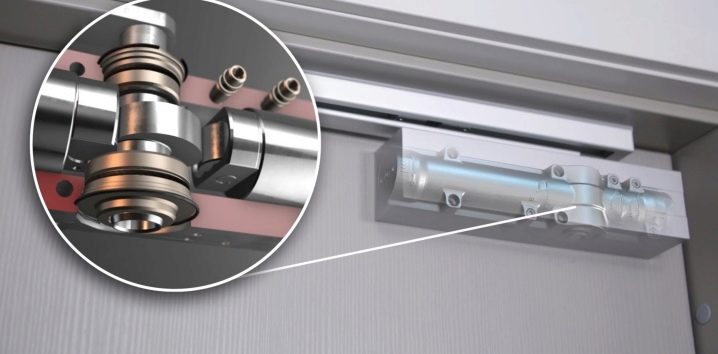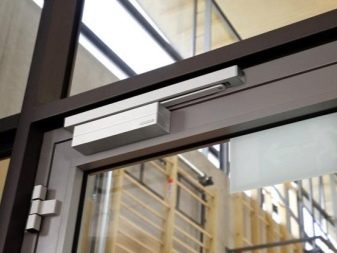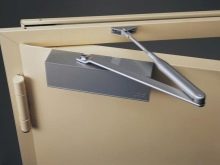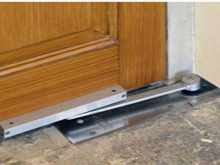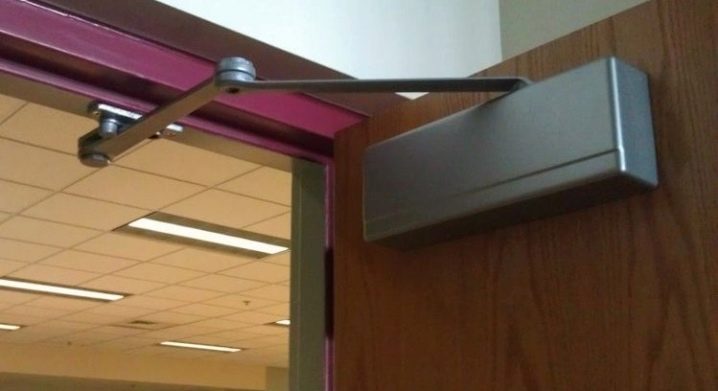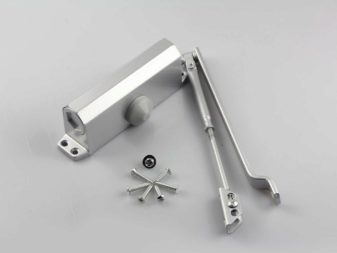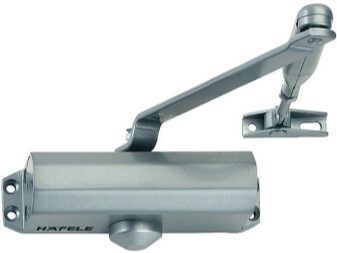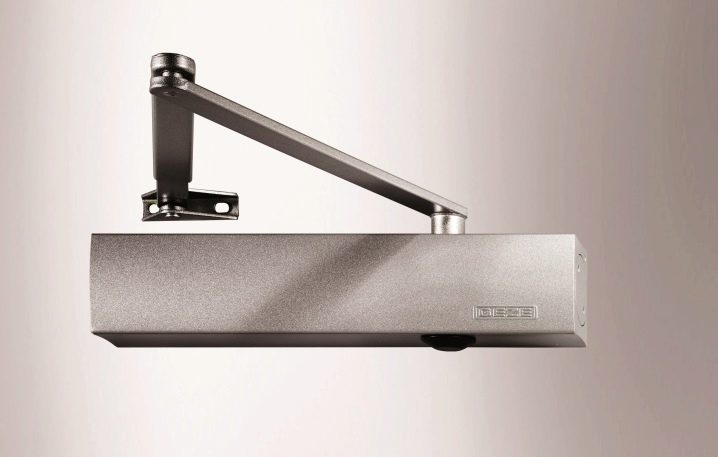Choose a door closer for sliding doors
To comfortably use the door, you need to put the closers with sliding bolts. This design is recognized as one of the best. But it is important to understand all its details before making the final choice.
Special features
The action of the device is based on the so-called cam gear. The door closer can be placed directly on the canvas or cut into the end of the door. The advantage of the design is the absence of protruding parts. This makes the closer safer and more aesthetic. Mechanisms with sliding bolts are installed very easily, there will be no problems during operation.
How to choose a suitable product?
To closers for the door met the expectations of customers, you need to consider:
- type of door;
- the weight and size of the canvas;
- thermal conditions in the room;
- safety requirements.
The heavier the door, the stronger should be the device mounted on it. When choosing a door closer to the front door you need to take care of protection from the cold. Especially high safety requirements in areas where children are. Device installation can be done:
- on top of the canvas;
- on the floor;
- at the end of the door.
When choosing between these positions, it is worth thinking about both convenience and aesthetics. A quality closer, wherever he sets, should close the door as tightly as possible. But at the same time the movement occurs smoothly, without jerks. Products of reputable companies are easily mounted on structures made of all common materials. Also, consumers should be guided when choosing for a period of uninterrupted operation and the level of protection against vandals.
We must immediately decide what is more important - cost savings or reliability and safety. Experts recommend to give preference to such closers who are able to:
- set a certain speed of movement of the valves;
- fix the open canvas;
- open and close the door up to a million times without degrading performance.
Types of mechanisms and features of their work
Overhead version of the device is a box of metal. Its size is small, but it is still better to prefer the mechanism that is installed is hidden. When the sash is locked, it is completely invisible. The main working part of the closer is the spring. It is completely immersed in lubricating oil. As soon as the door is opened, the lever presses on the spring and the oil moves inside the case. When closing the spring straightens, and the liquid immediately returns.
An additional part of the system are the valves. They allow you to adjust the force applied to close the doors. Valves will also help limit the speed of the blade so that it does not slam. But no valves will not help if the choice of door closer ignored the mass of the door. For this indicator, the European standard for closers.
On the interior door put the mechanisms of the category "EN1". Even the most powerful closers (category "EN7") will not help if the sash is wider than 160 cm or the canvas is heavier than 160 kg. The “EN” scale indirectly affects the price. The difference in the cost of closers of one class can not be significant. Attempts to save and install a less powerful device than necessary will only lead to rapid wear and the need to buy the mechanism again.
Closers are certainly put:
- on any door with hardware access control;
- at the entrance to the apartment;
- on all firebreaks;
- at all emergency exits.
If the door is not equipped with a latch lock, the mechanism of the closer helps to achieve tight contact between the blade and the seal along the entire perimeter. Sliding channel closers are used to transfer force to a sliding gear. Such designs provide the minimum visibility of the product. You can even put it on the doors that go into narrow corridors or small rooms. Both the thrust and the wall will not be damaged.
On how to choose the closers for the doors with a sliding rod, see the following video.
